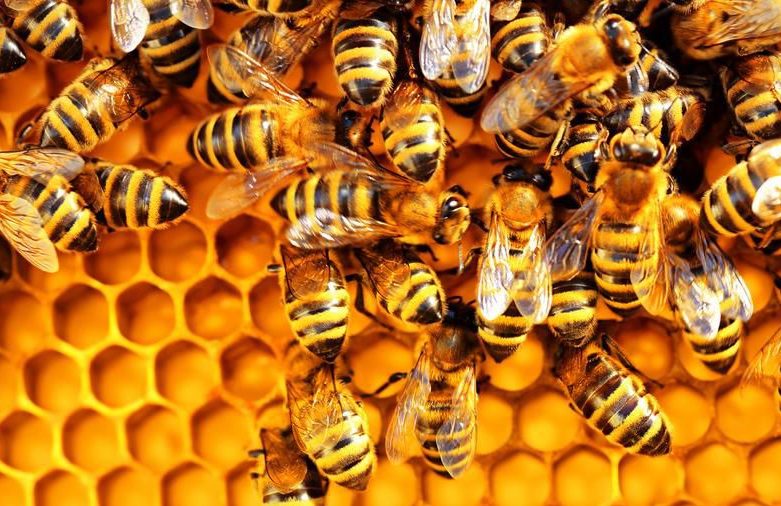COLONY COLLAPSE DISORDER
Colony Collapse Disorder (CCD), or “Mary Celeste Syndrome”, occurs when a colony of worker bees abandon the hive, leaving behind the queen, larvae, and food resources. Scientists mostly attribute it to a combination of pesticides (especially neonicotinoids), varroa destructor mites, fungi, declining biodiversity and even climate change.
IT STARTED AS EARLY AS 1903
The USDA reported that CCD began affecting colonies as early as 1903, where extreme temperatures caused a decline in 2,000 colonies in Utah. In 1996, Pennsylvania reported a 54% decrease in its bee populations. Since 2006, CCD has become a major threat to bee colonies worldwide, ruining nearly 40% of all hives.
AND PEAKED IN 2013
The Bee Informed Partnership recorded that 2013 was the deadliest year for bees in the US, with a reported 30% total winter loss and 45% yearly loss of all bee colonies nationwide. 12 states alone lost more than 50% of their entire colonies in 2014-2015: Oklahoma (63.4), Illinois (62.4), Iowa (61.4) Delaware (61), Maryland (60.9), Pennsylvania (60.6), Maine (60.5), Wisconsin (60.2), West Virginia (59.5), Connecticut (57.5), Florida (54.8) and New York (54.1).
MONARCH BUTTERFLIES
Monarch butterflies have also fallen victim to CCD. Cronkite News evidenced that that Monarch butterfly populations have declined 90% over the last 20 years, dropping as low as 1 billion to 33 million in 2013. Some activists have called for the government to place them on the US Endangered Species List.
BE POPULATION DECLINE CULPRITS
A PLOS ONE report attributed the growing use of pesticides in US and European markets to Nosema Ceranae, a single-celled fungus that infests the gut of forager bees, killing them within 8 days of exposure. Scientists can treat with antifungal medicines, but risk aggravating the parasite by proliferating resistant strains.
A Zeitenschrift report documented the ill effects of “electrosmog”, or electromagnetic field pollution, where scientists noticed high levels of disorientation in bee behaviour after subjecting them to EMFP. They also highlighted the link between RF communication devices and its effects on animals, who depend on the Earth’s magnetic poles to migrate.
WHY BEES ARE IMPORTANT
Greenpeace reports that 70% of all food crops humans need for 90% of their nutrition are pollinated by bees, making them essential for global food security.
The Federation of American Scientists notes that bee pollination contributes $160 billion in revenues to the global food industry. In America alone, bees are responsible for $16 billion in profits.
In the US, shortages in bee colonies have forced farmers to rent commercial migratory beekeeping services, or “hives for hire” costing around $150-200 per colony, which have caused up to 20% increases in agricultural expenses.
The White House commented that California’s almond industry requires 1.4 million bee colonies, about 60% of all US beehives, which contributes 80% of global almond production and 4.8 billion USD per year in profits alone.
HOW YOU CAN HELP
Greenpeace has created an online petition with a 5-point list of demands, which are to ban harmful pesticides, use non-chemical farming alternatives, monitor the health of bees, properly assess the risk of pesticides, and dedicate more funding to ecological farming. It has accumulated well over 500,000 signatures.
The United Nations has begun work on the Global Pollination Project, which aims to tackle the growing bee epidemic and preserve the biodiversity of the planet’s wildlife.
Online magazines like Bee Culture Magazine are changing the game of “Beepocalypse Inspired Activism”. In Sept. 2014, they featured the groundbreaking Friends of the Earth report entitled “Follow the Honey”, which revealed how “tobacco industry-style tactics are being used to divert attention from, and cast doubt on industry complicity in pesticide’s role in the current pollinator decline”.
The Opera Research Centre has outlined one of the most comprehensive list of causes and effects of CCD in their “Bee Health in Europe” report. They also give a list of organisations with their respective roles that are helping to restore bee colony health.
The Pollinators Partnership is one of the world’s largest and well-established organisations for pollinators, beekeeping, and CCD. Founded in 1997, they list ways to organise communities, offer annual conferences, feature a massive learning centre, and connect the world to their extensive list of intergovernmental partners.
ENVIRONMENTAL T-SHIRTS BY ALLRIOT
Ethical shopping can be confusing. To learn about ethical and eco certifications, please visit our ethical certifications glossary.
-
£24
Add to Wishlist Add to Wishlist
-
£20
Add to Wishlist Add to Wishlist
-
£20
Add to Wishlist
Add to Wishlist
-
£20
Add to Wishlist Add to Wishlist
-
£24Add to WishlistAdd to Wishlist
-
£20Add to WishlistAdd to Wishlist
-
£20Add to WishlistAdd to Wishlist
-
£20Add to WishlistAdd to Wishlist

























